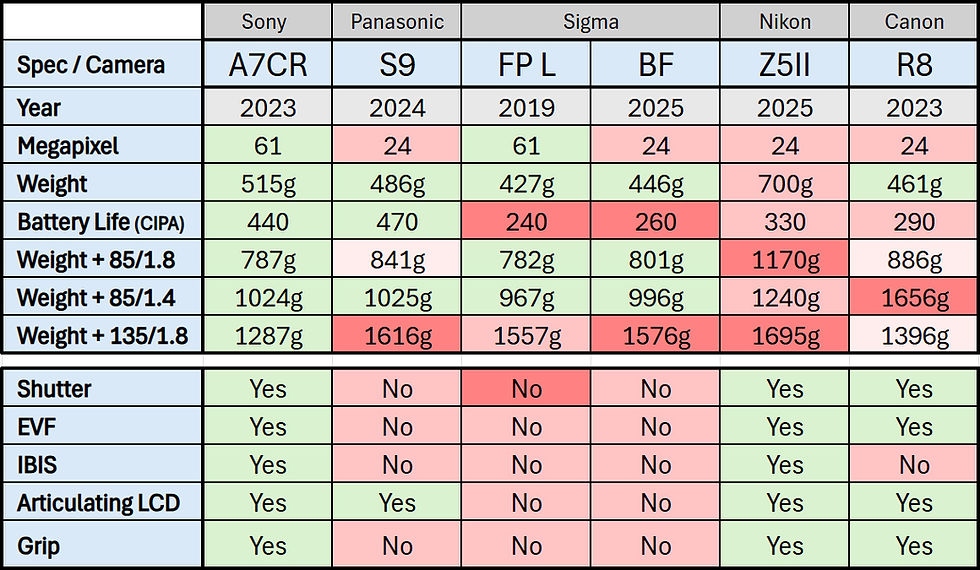Internal Clip-In Filters - Sony A7
- Admin
- Feb 4, 2018
- 3 min read
Switching from DSLRs to Sony's mirrorless system noticeably reduced my camera bag weight and converting it to full spectrum made it more versatile. However, using external filters brought with it a few issues. For one I needed a lot of them (for various lenses), but more annoying was the ghosting that came from having flat glass in front of the lens elements.

Benefits
These internal filters from Astronomik potentially fix both of these problems while improving some other small aspects I hadn't initially considered. Firstly - when I switch lenses with my Wife's Sony A7II I don't have to worry about leaving filters on the lens and secondly - I can switch lenses while keeping the wavelength that I am shooting in. This also reduces the sensors exposure to dust.

These three above filters are:
OWB - For shooting visible colour (like a hot mirror, but works in a different way)
642 BP - For shooting colour infrared (higher than a red wavelength and cuts more IR too)
807 - For shooting B&W infrared (allows light from wavelengths above 800nm)

Here's an example of the OWB vs 807 filter. The colours that I am seeing from the OWB filter are quite impressive. I think that I prefer them to the external hot mirror results, but I need to do a proper comparison to show what difference there may be. The reason that I haven't yet brings me to the down sides...
Negatives
The lighting change between the two above images is noticeable due to the filter change being quite fiddly and time consuming. I like switching wavelengths while shooting the same scene, but with this system it not only takes longer to do, but requires removing the lens and exposes the sensor more than usual.

Internal reflections can happen with the clip-in 807, much worse than with external filters. This looks bad and although it happened less than 10% of the time it made me want to switch back to external filters for shooting high contrast B&W, which would also allow for better wavelengths for this effect (830-850nm). Perhaps less of an issue was the brown vignette, possibly also caused by internal reflections.

The highly reflective surface of these filters could be the cause of the internal reflections (bouncing light between the front of the filter and the back of the lenses anti-reflective coating). I have never seen an external infrared filter with a reflective surface like this, so I'm not sure that it's necessary or a good idea.

Desaturating the images from the 807 filter doesn't seem to show any obvious negatives from this corner issue and sharpness seems to be uninhibited too.

Lenses with a relatively normal field of view aren't affected by the borders of the filter because the light they project comes from a point fairly close to the filter, at a tight angle into the corners of the sensor. Longer lenses (like this 300mm + 2x tele converter), project light so straight that obtrustive vignetting is caused by the edge of the filter.

Main Purpose
The main reason that I bought this filter system was to allow my camera to shoot normal colour without ghosting issues that you get from external filters. This is especially noticeable on night scenes (above) or shooting into the sun (sunrise / sunset). I incorrectly assumed that the above image showed the internal filter to not completely stop ghosting. However the ghosting here is normal for the Sony FE 85mm f/1.8 lens.

Once I switched to the stunning Sigma Art 135mm f/1.8 lens it demonstrated that the internal filters do indeed fix this issue completely. To better see the above results check the following video examples:

This sunset further exemplifies how well controlled the Sigma lens is with ghosting and how the internal filter is needed for this kind of photography. It also shows that the filter is still slightly vignetting at this focal length. 100/105mm should be perfectly OK, but even 120mm might be free from this effect.



Comments